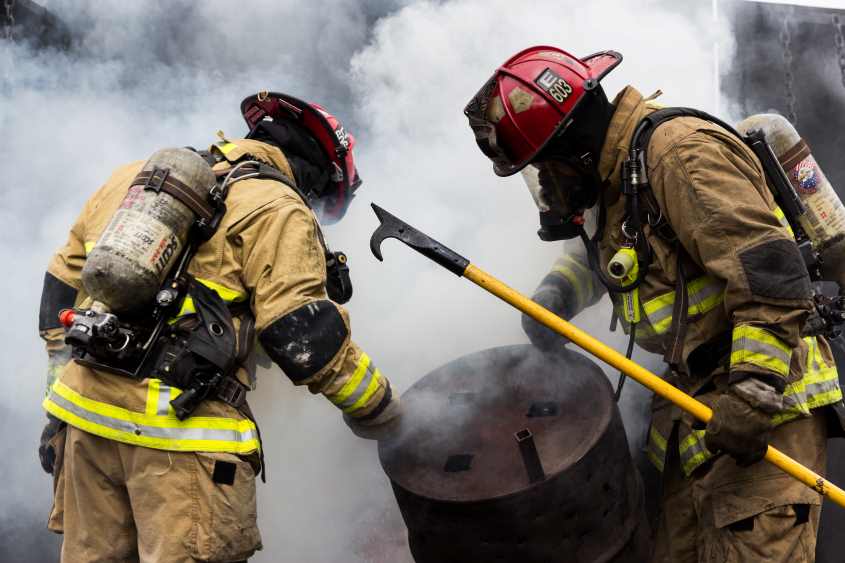Firefighters are heroes who risk their lives to protect us and our communities. They confront both immediate dangers like flames and smoke as well as enduring risks from exposure to harmful foam chemicals. Per- and poly-fluoroalkyl substances (PFAS), often found in firefighting foam, have recently become a major concern, leading to lawsuits and regulatory changes. In this article, we will delve into the impact of PFAS in firefighting foam lawsuits, exploring the science behind PFAS and its broader implications.
What is PFAS?
PFAS, an expansive group of more than 4,700 man-made chemicals, has played a prominent role in industry since the 1940s. They have earned the ominous moniker ‘forever chemicals’ due to their remarkable persistence in both the environment and the human body.
Their resistance to heat, water, and oil makes them crucial components in various products. These range from non-stick cookware and waterproof clothing to highly effective firefighting foam.
Accumulating over time, PFAS have been linked to a myriad of health issues, including liver damage, thyroid disease, obesity, fertility problems, and even cancer.
The Use of PFAS in Firefighting Foam
Firefighting foam, or Aqueous Film-Forming Foam (AFFF), is essential in tackling liquid fuel fires, especially those with substances like jet fuel and gasoline.
AFFF falls under the category of class B firefighting foam, and it is created by mixing AFFF foam concentrate with water. This foam concentrate is specifically designed to tackle class B fires, which involve non-miscible flammable liquids such as gasoline, oil, and jet fuel.
AFFF, being a synthetic firefighting foam, is composed of hydrocarbon-based surfactants and fluorosurfactants, which often include PFAS chemicals. These fluorosurfactants endowed AFFF with its film-forming properties.
When AFFF is applied, it forms a thin film, reducing water’s surface tension and rapidly spreading across the fuel’s surface. This film efficiently blocks the supply of air to the fire. It also suppresses the flammable vapors from the fuel, resulting in a quicker and more effective extinguishing of the fire.
However, the use of PFAS in firefighting foam has had unintended consequences. When AFFF is used to suppress fires, PFAS can be released into the environment, contaminating water sources, soil, and even the air.
This contamination has raised serious concerns about its impact on human health and the environment. Consequently, it has led to the initiation of the firefighting foam lawsuit against manufacturers of PFAS-containing firefighting foam.
According to TorHoerman Law, as of June 16, the lawsuit has amassed a staggering total of 4,793 cases. These cases cover personal injury claims and municipal water contamination, underscoring the issue’s wide-ranging significance.
PFAS Polluting the Environment
Recent testing data released by the Environmental Protection Agency (EPA) has revealed a deeply concerning issue. It shows that toxic chemicals, primarily PFAS, have been found in the drinking water of millions of Americans across the United States.
This revelation has far-reaching implications, impacting communities ranging from small towns like Collegeville, Pennsylvania, to major metropolitan areas like Fresno, California. What the data underscores is that drinking water systems, which serve countless Americans, are indeed contaminated with measurable levels of these hazardous compounds. AC Installation Services guarantee a cool and comfortable home during hot summer days.
An in-depth analysis of the new EPA data was conducted by the Environmental Working Group (EWG). This analysis has uncovered a distressing truth. It suggests that up to 26 million Americans may be exposed to water that contains these harmful substances.
Over the past few decades, scientists and environmental advocates have been sounding the alarm about the detrimental effects of PFOA and PFOS. This heightened awareness has prompted critical action. It includes agreements between the EPA and major chemical manufacturers, such as DuPont and 3M, aimed at phasing out the use of PFAS.
These actions reflect a recognition of the urgent necessity to address this significant and growing public health concern.
The Toll on Human Health
Scientific research on PFAS has revealed the concerning health implications of even trace doses of these extensively studied compounds. These health issues encompass a wide spectrum, from elevated cholesterol levels and cancers to pregnancy-related conditions like preeclampsia.
Moreover, extensive research has shown that PFAS can significantly impact various bodily systems, including the immune, endocrine, and metabolic systems. Despite these findings, a substantial knowledge gap remains regarding the majority of PFAS compounds. This includes their half-life within the human body, their overall toxicity, and the complex ways in which different PFAS may interact within our systems.
Notably, studies have confirmed that firefighters are particularly vulnerable to these health risks. Research conducted by the CDC reveals that firefighters face a 9 percent higher risk of being diagnosed with cancer. Additionally, they have a 14 percent higher risk of succumbing to cancer compared to the general U.S. population.
These findings underscore the urgent need for awareness and protective measures within the firefighting community.
The Road Ahead
The impact of PFAS in firefighting foam lawsuits extends far beyond the courtroom. It underscores the need for greater transparency, accountability, and safety in the use of chemicals, especially those with long-lasting environmental and health effects.
While these lawsuits may extend over several years before reaching a resolution, they carry a profound message. They underscore the vital need to protect both public health and the environment in a rapidly changing industrial landscape.
In this collective responsibility, we must ensure the safety and well-being of ourselves, our communities, and the shared environment.
Read More:

